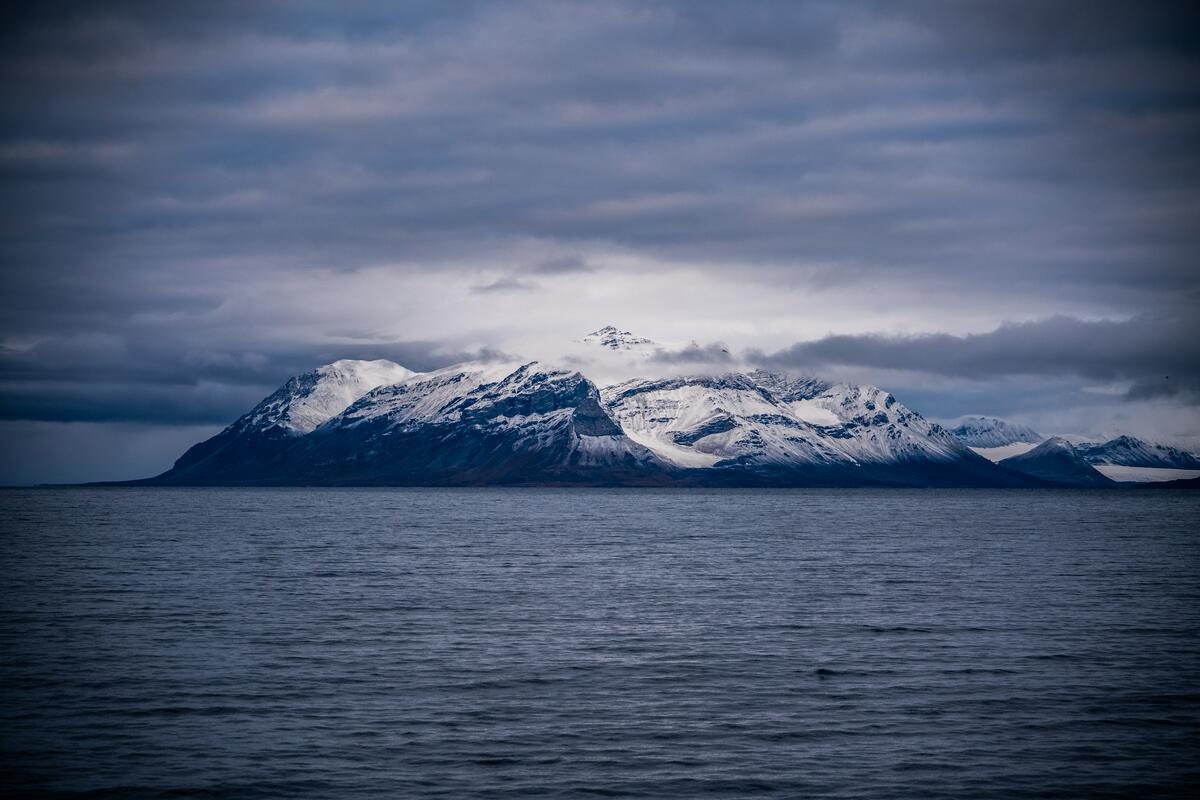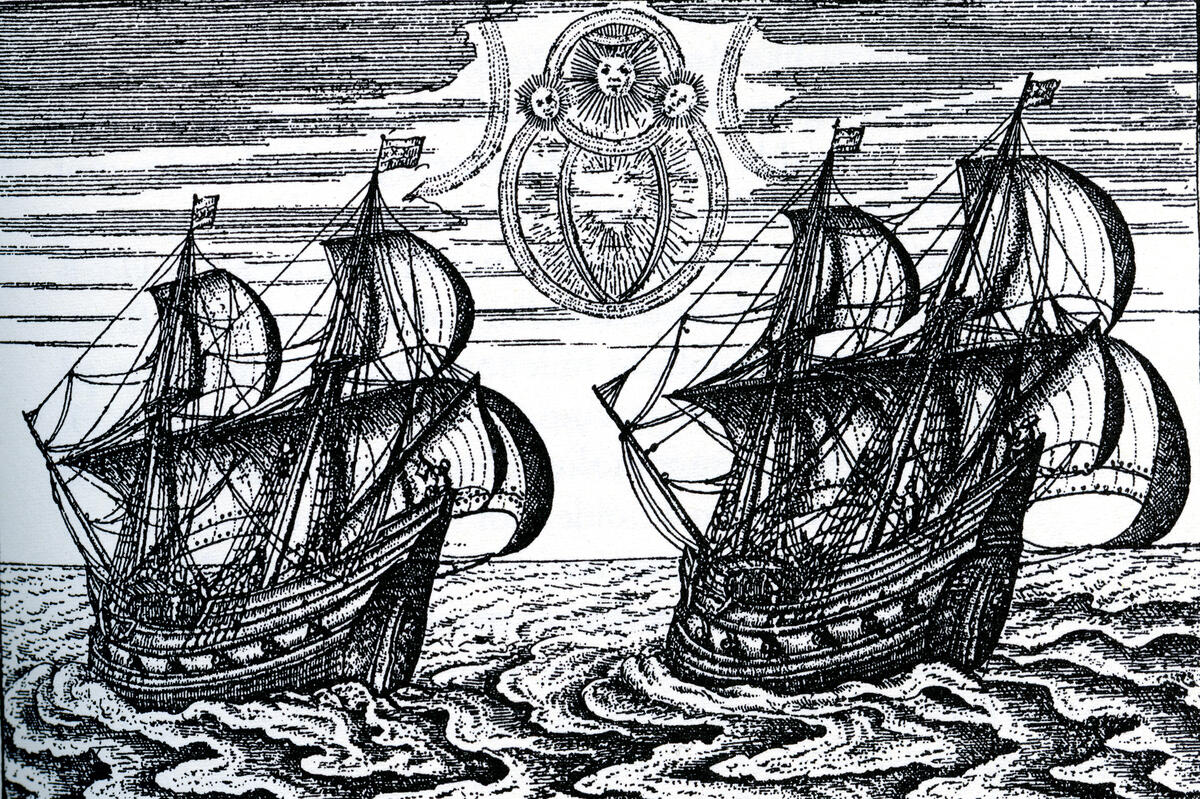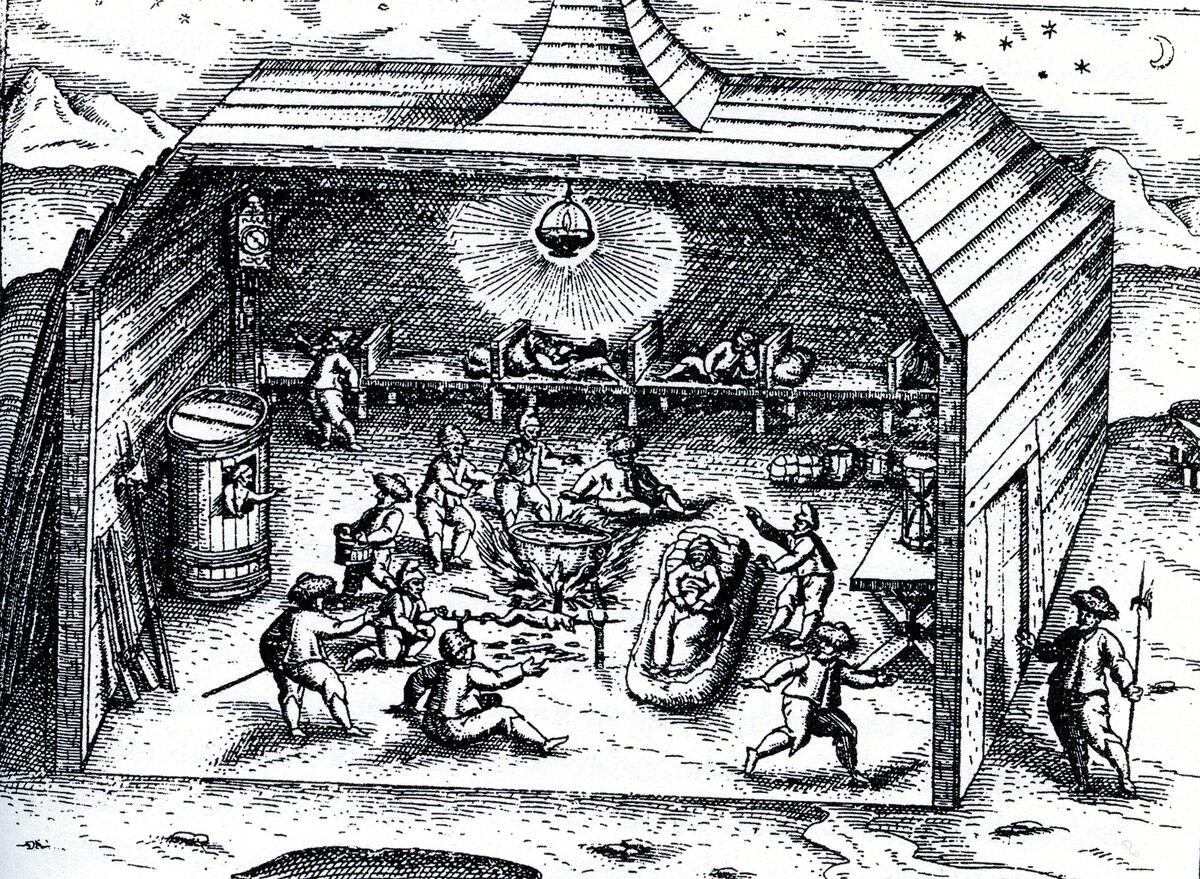At that time, the tiny Dutch Republic was a major trading and seafaring nation. The country was experiencing rapid economic growth and was at the forefront of shipbuilding, seamanship, and geography. The Republic had active authorities and a rich merchant class. They could equip and send expeditions all around to world in search of new markets and opportunities. Spain and Portugal controlled the important southern sea routes to the Far East. For this reason, the Dutch were eager to find a northern sea route to the valuable Asian markets – the Northeast Passage.
In May 1596, two Dutch ships set sail from Amsterdam, northward bound. They were captained by Jan Cornelisz Rijp and Jacob van Heemskerck. Willem Barentsz served as navigator on Heemskerck’s ship, and was the de facto leader of the expedition.
- 1/1
Barentsz’ two ships
This was the third straight year Barentsz had gone in search of the Northwest Passage. In both 1594 and 1595, the expeditions had been thwarted by ice in the Kara Sea. This time they attempted a route straight toward the North Pole. As early as 5 June they encountered drift ice that forced them to take a more easterly course. On 10 June, they discovered Bjørnøya, Bear Island. The Dutch name – Beeren Eiland – was given after a long battle with a polar bear off the coast of the island. The expedition continued northward until they encountered the ice edge, which they followed to the southeast. On 17 June, they sighted land again at about 80° North. They sailed south along the west coast and described the terrain as ‘nothing but mountains and sharp peaks, so we called it Spitsbergen’. This is the first known description of Spitsbergen.
Back at Bjørnøya, the two ships parted ways. Rijp and Barentsz disagreed about the onward course. Barentsz rounded the northern tip of Novaya Zemlya, but became trapped in the ice; it was now late August. The ship was broken apart by pack ice and the crew were force to evacuate to land. They built a house out of driftwood and ship timbers, in which the seventeen crew members would spend the winter. Most of them became ill and two died. Barentsz himself was sick and exhausted when they started the homeward journey in two open boats 13 June 1597. He died 20 June and was buried on Novaya Zemlya. Two others died shortly after.
- 1/1
Interior of Barentsz’ house on Novaya Zemlya
With great effort, the twelve survivors made it to the Pechora coast. At the beginning of September, they reached Kola, where they were fortunate enough to meet three Dutch merchant ships, which took them home.
Barentsz’ crew arrived back in the Dutch Republic 19 October 1597. The Northeast Passage had not been found. They brought along Barentsz’ maps of their discoveries in 1596. The dramatic events of the previous winter and the journey home were a sensation in their own right. Never before had Europeans survived a winter at latitudes as high as 76°N.
Almost three hundred years later, in 1871, the Norwegian Arctic skipper Elling Carlsen discovered the site where Barentsz and his crew had spent the winter. Many artifacts from the expedition lay well preserved under layers of ice.
- 1/1
William Barentsz



